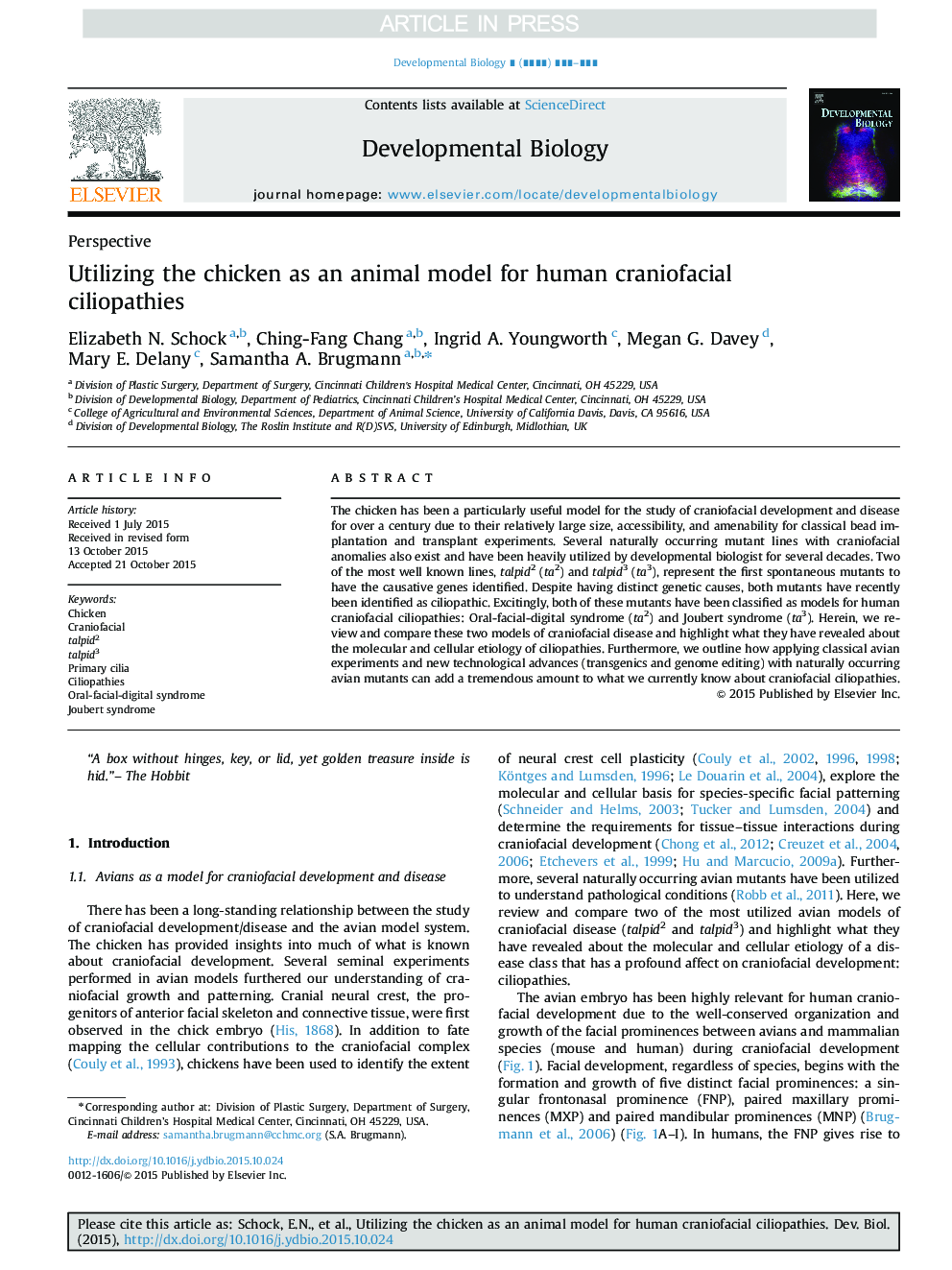| کد مقاله | کد نشریه | سال انتشار | مقاله انگلیسی | نسخه تمام متن |
|---|---|---|---|---|
| 10931121 | 1093614 | 2016 | 12 صفحه PDF | دانلود رایگان |
عنوان انگلیسی مقاله ISI
Utilizing the chicken as an animal model for human craniofacial ciliopathies
دانلود مقاله + سفارش ترجمه
دانلود مقاله ISI انگلیسی
رایگان برای ایرانیان
کلمات کلیدی
موضوعات مرتبط
علوم زیستی و بیوفناوری
بیوشیمی، ژنتیک و زیست شناسی مولکولی
بیولوژی سلول
پیش نمایش صفحه اول مقاله

چکیده انگلیسی
The chicken has been a particularly useful model for the study of craniofacial development and disease for over a century due to their relatively large size, accessibility, and amenability for classical bead implantation and transplant experiments. Several naturally occurring mutant lines with craniofacial anomalies also exist and have been heavily utilized by developmental biologist for several decades. Two of the most well known lines, talpid2 (ta2) and talpid3 (ta3), represent the first spontaneous mutants to have the causative genes identified. Despite having distinct genetic causes, both mutants have recently been identified as ciliopathic. Excitingly, both of these mutants have been classified as models for human craniofacial ciliopathies: Oral-facial-digital syndrome (ta2) and Joubert syndrome (ta3). Herein, we review and compare these two models of craniofacial disease and highlight what they have revealed about the molecular and cellular etiology of ciliopathies. Furthermore, we outline how applying classical avian experiments and new technological advances (transgenics and genome editing) with naturally occurring avian mutants can add a tremendous amount to what we currently know about craniofacial ciliopathies.
ناشر
Database: Elsevier - ScienceDirect (ساینس دایرکت)
Journal: Developmental Biology - Volume 415, Issue 2, 15 July 2016, Pages 326-337
Journal: Developmental Biology - Volume 415, Issue 2, 15 July 2016, Pages 326-337
نویسندگان
Elizabeth N. Schock, Ching-Fang Chang, Ingrid A. Youngworth, Megan G. Davey, Mary E. Delany, Samantha A. Brugmann,